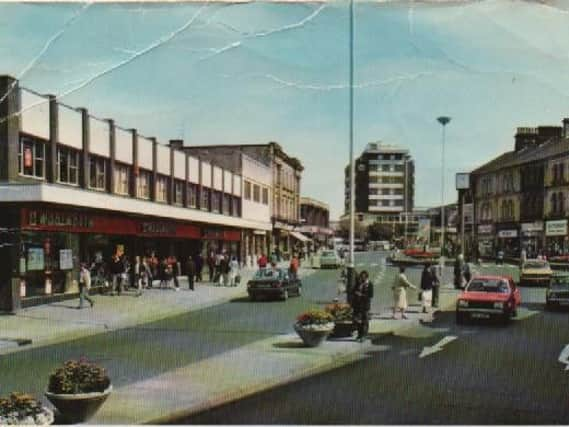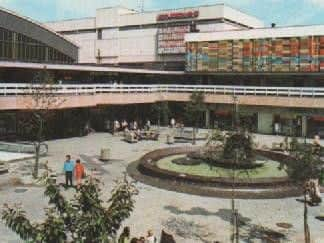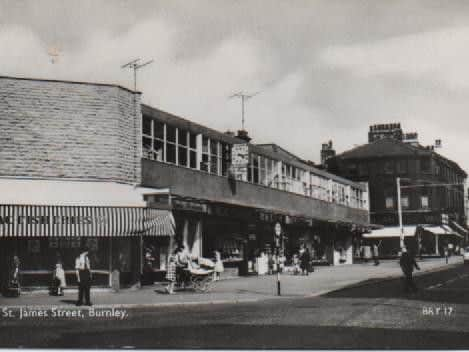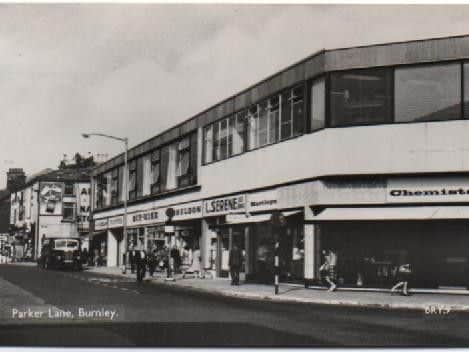Burnley in the 1960s and 1970s


This became apparent, a week or so ago, when one of my readers pointed out that I do not write all that much about the immediate past, the 1960s, for example.
When this sort of thing is said, I usually say that it is too recent for me, but the statement got me thinking and the present article is the result. Incidentally, this situation reminds me of the old joke about the young schoolboy sent home to interview his grandmother about what it was like to attend the Cat’s Whiskers when it first opened. His opening gambit was: “What was it like when you were alive, gran?”
Advertisement
Hide AdAdvertisement
Hide AdLeast said about this one, I think, but I have chosen four town centre images from the postcards in the Briercliffe Society Collection which were taken in the 1960s and 1970s, or thereabouts. Only one of the images shows nothing of Victorian Burnley. The card is described, oddly, as “Shopping Arcade, Burnley” but each of the others includes something of the old town. Two are of St James’s Street and the other is taken on Parker Lane.


Let’s start with Parker Lane. Many of you will remember the new building, in the picture, as the home of the Lucas Club which occupied almost all of the top floor. Not having any relatives who worked at Lucas I wasn’t a frequent visitor to the club but my father had a friend, Arnold Greenwood, who was something of a big wig at Lucas and, on one occasion, I found myself invited to spend part of an evening at the club.
I do not remember all that much about the visit but I do recall a young lad who constituted the entertainment for the evening. He was a comedian. It might have been the drink but I do not remember a better performance of this kind by anyone else at this sort of venue. He literally had people rolling in the aisles but I can’t give you his name and I don’t think that I ever heard of him again.
Incidentally, the old Lucas Club is still standing, on what is left of Bridge Street. It was in the same block as the Bridge Inn, though that is now known as the Bridge Bierhaus, one of the many signs, locally, of the rebirth of the German nation. Most of us seem to be driving around in German cars, washing our clothes in German washing machines and doing our DIY using German equipment. If we were once the “workshop of the world”, that is no longer the case and the Germans must be one of the claimants to the crown.
Advertisement
Hide AdAdvertisement
Hide AdIn 1960 there would have been no sign of the modern shops which occupy most of the image. I have a photograph, taken in June 1960 by the Burnley Express, which shows the offices of the Borough Building Society (which are on the other side of Parker Lane, though the building is now occupied by the Council) under construction. It was not for another few years that the old terraced housing of Boot Street and Peter Street (the site shown in the picture) was demolished.


If you are wondering who “Heldon’s” were, you have to put an “S” in front of the name, making “Sheldon’s”, the ladies out-fitters. The other shops were, left to right, Bridge’s green grocer’s; North’s dry cleaner’s; Buy-Wise an early super market?; L. Serene Self Service, grocer?, and Hartley’s Chemists. I can’t say anything about L. Serene, but I still miss Hartley’s.
In the background, left, the wall of the Army and Navy Stores is adorned with the famous advert for Cadbury’s Dairy Milk and, in this little block, once was Burnley home of the YMCA. Littlewood’s, in Burnley, also in this block, was not a department store but a very good pet shop. If you look closely you will see some workmen on the roof of this building, their huge ladders casting a shadow on the premises. Beyond these shops, which incidentally, included a number of booking offices for local coach companies, you can see the Boot Inn.
It is not possible to describe each of the four images in the detail that has been given to the Parker Lane photograph, but the image which includes the Keirby Hotel was taken in the later 1970s or early 1980s by which time the Keirby was a Crest Hotel. That name is at the top of the building. Notice the new poorly designed shops, particularly Woolworth’s, left, and the Victorian shops, right.
Advertisement
Hide AdAdvertisement
Hide AdWith the other image on St James’s Street we have the first of the new properties in the town centre re-development scheme. It was known as the Empress Block, after the famous hotel, which once occupied part of the site. These new shops, which were built between 1964-7, included, as you can see, the large store of another defunct British firm, MacFisheries. Some of you will remember the Hawkins of Preston shop next door. They, of course, famously made shirts, often with detachable collars. I remember Mum having quite a battle with my Dad to get him to give up detachable collars. He claimed they gave Mum less washing to do but this did not “wash” with Mum, if you pardon the pun.


The image of the “Shopping Arcade, Burnley” is, as you will know, misnamed. The picture is, of course, of the new Market Square. The Market Hall, left in the image and Burnley’s third Market Hall in my lifetime, replaced the Victorian building but not on the same site. It was completed by 1969/70. To the right is Studio 1-2-3, a cinema which was finished by about 1970 and, to the right again, is Quality House, the department store occupied by the Burnley Co-op which did not last very long, after the opening of these badly run premises, enduring the ignomy of being effectively taken over by the much smaller Padiham Co-op.
I hope that this satisfies those interested in Burnley’s buildings of the later 20th Century. For me, none of these buildings is particularly interesting and the Keirby verges on being an eyesore. Forgive me for adding that, if you want to know more about Burnley’s better 20th Century buildings, you can join me in a Burnley Civic Trust conducted tour of many of them at 10-30am on Saturday,, October 1st. Meet at the front of the Town Hall. Hope to see you there.